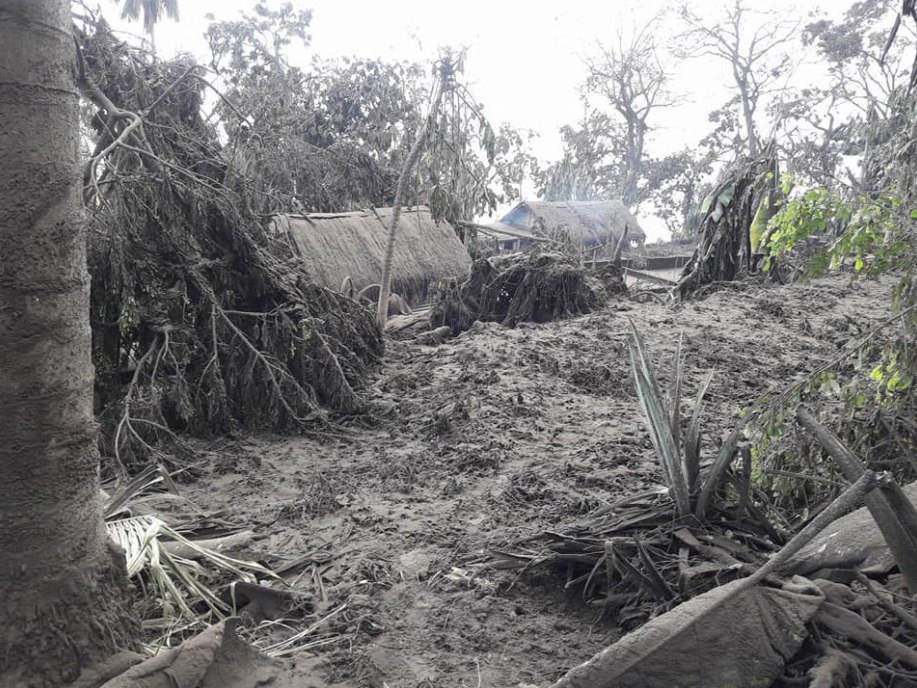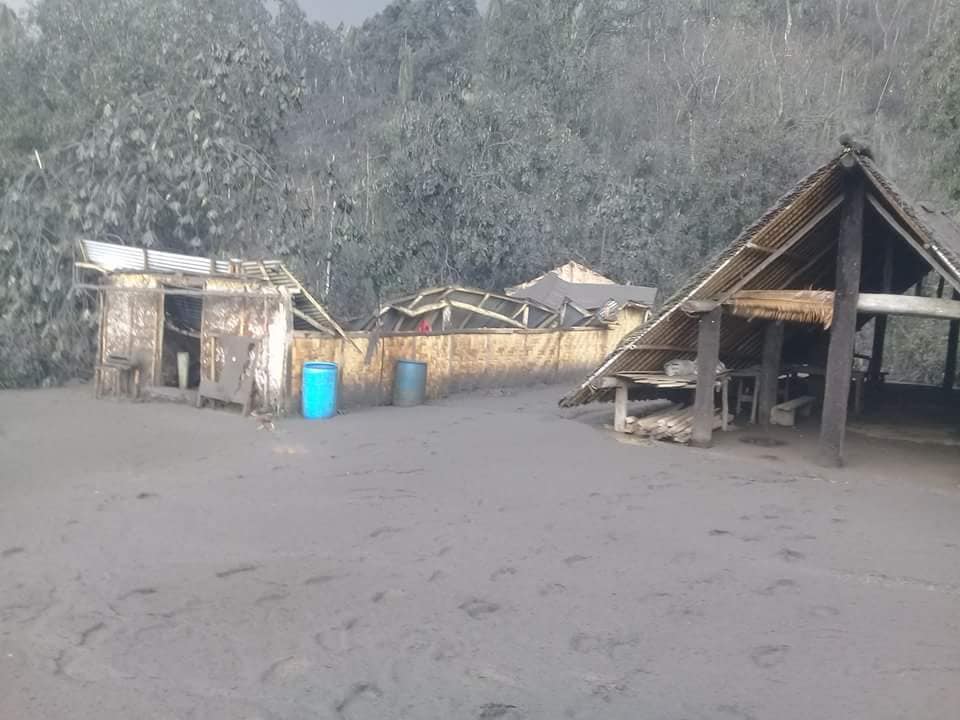Thousands of south Pacific islanders at the mercy of an active volcano will be permanently relocated by the end of May, the Vanuatu government has said. Ash as deep as 30cm has already settled on many parts of the island, and people are experiencing breathing difficulties, skin reactions and illnesses such as chest infections as they waited to leave. Islanders are frightened and can not wait to get away
Ambae Island is home to 11,000 people, and for the second time in six months Ambae’s Manaro volcano on top of Mount Lombenben has started rumbling, spewing torrents of ash and gas from its crater and burying vegetable plots and crops, causing breathing and health problems for locals, and threatening their lives and livelihoods.
People living in the north, west and south of the island are worst affected by the ash and began being evacuated on Thursday after a state of emergency was declared on Tuesday

“The ashfall, like part of west Aambae was covered and it was dark [because] of the smoke and the population there was remaining inside and could not come outside. And there was a gas emission as well. So the people are scared.”
A local priest said the situation was “desperate” for locals as food supplies and animal feed were beginning to run out, water was contaminated by ash and disease was spreading among the evacuees, most of whom are subsistence farmers.

Police and some aid agencies are already in place, with the army expected to arrive later this week to orchestrate the mass evacuation which this times looks to be permanent.
“In times like these, it is always the vulnerable sections of our communities being the women, the children and the elderly, that are most affected,” Avio Roberts, national coordinator for the Vanua’aku party.

The Hayward Fault was named California’s “tectonic time bomb” in 2007 by seismologist Tom Brocher, due to the growing risk for 2 million Bay Area people that live above it.
The USGS estimates a main-shock collapse of 2,500 buildings, 800 killed people and 18,000 severe injuries. People stuck in elevators could also die over the following days. Emergency workers would be overwhelmed with more than 22,000 people requiring rescue from stalled elevators.
With water mains broken, secondary shock would include about 400 natural gas fires erupting and potentially destroying 52,000 homes. About 152,000 households would be displaced due to damage or lack of access, causing approximately 411,000 people to be displaced. The estimated total financial loss would be about $82 billion.
advertisement
The buildup of pressure along the northern San Andreas fault in the 1800s produced a series of magnitude 6.0 or greater earthquakes, eventually leading to the 1906 magnitude 7.8 San Francisco Earthquake. But California’s 1868 magnitude 7-plus quake along the 75-mile Hayward Fault may have been largest and potentially deadliest quake, had more people been living in the area..
The U.S. Geological Survey led a collaborative effort with United Research Services, Lawrence Livermore National Laboratory, Stanford University, and the University of California at Berkeley created computer simulations in 2008 for anticipated earthquakes on the Hayward fault.
Researchers are concerned that the last large quake along the Hayward Fault was in October 1868. Scientists have documented 12 major prehistoric earthquakes along the fault over the past 1,900 years that re-occur in about 150-year intervals, which means the clock is ticking.
Researchers are especially concerned that the Hayward Fault’s 45-mile long little sister the Rodgers Creek Fault, which runs from Santa Rosa south to just north of Richmond in San Pablo Bay, could combine in an epic cascading 130-mile long monster earthquake.
USGS earthquake geologist emeritus David Schwartz commented to the Los Angeles Times regarding the risk of a 7.0 magnitude eruption along the Hayward Fault, “It’s just waiting to go off.”
The USGS offers an online information booklet published in several languages called “Putting Down Roots in Earthquake Country” that can serve as a guide to prepare for what experts believe is the inevitable large earthquake to strike the San Francisco Bay region.
No comments:
Post a Comment